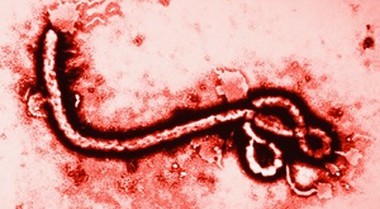
As medical personnel and public health officials are responding to the first reported cases of the deadly Ebola virus in the United States, many of the standard procedures for treating the virus and preventing its spread are being reexamined.
One of the tenets for minimizing the risk of spreading the disease has been a 21-day quarantine period for individuals who might have been exposed to the virus. But a new study by Dr. Charles Haas, PhD, a professor in Drexel University’s College of Engineering, suggests that 21 days might not be enough to completely prevent spread of the virus.
Dr. Haas’s study “On the Quarantine Period for Ebola Virus,” recently published in the journal PLoS Currents: Outbreaks, looks at the murky basis for our knowledge about the virus, namely previous outbreaks in Africa in 1976 (Zaire) and 2000 (Uganda) as well as the first 9 months of the current outbreak.
In both prior outbreaks, data gathered by the World Health Organization reported a 2 to 21 day incubation period for the virus – meaning that if the individual hasn’t presented symptoms after 21 days, they are likely not to be infected or contagious. This is the genesis of the 21-day quarantine period, which has been the standard practice recommended by the WHO and the Centers for Disease Control and Prevention for several decades.
But in the new PLoS article, Dr. Haas argues that the evidence is simply not sufficient to support the recommended 21-day quarantine period for people suspected of harboring the virus.
“Twenty-one days has been regarded as the appropriate quarantine period for holding individuals potentially exposed to Ebola Virus to reduce risk of contagion, but there does not appear to be a systemic discussion of the basis for this period,” said Dr. Haas, who is the head of the Department of Civil, Architectural and Environmental Engineering at Drexel.
Standard incubation period too short for 5-12 percent of cases
Dr. Haas suggests that a broader look at risk factors and costs and benefits should be considered when setting this standard. With any scientific data of this nature there is a standard deviation in results – a percentage by which they may vary. In the case of Ebola’s incubation period, the range of results generated from the Zaire and Uganda data varied little. This might have contributed to the health organizations’ certainty that a 21-day quarantine period was a safe course of action.

In this graphical comparison of estimated distributions of incubation periods over different Ebola outbreaks, it is apparent that the Chowell analysis of the Uganda outbreak (solid red line) shows a more rapid incubation time than any of the other outbreaks, while the current outbreak (dotted blue line) has one of the longer incubation times. (Note: Exceedence probability refers to the probability that a case will exceed the current 21-day quarantine period).
But looking more broadly at data from other Ebola outbreaks, in Congo in 1995 and recent reports from the outbreak in West Africa, the range of deviation is between 0.1 and 12 percent, according to Dr. Haas. This means that there could be up to a 12 percent chance that someone could be infected even after the 21-day quarantine. Data from the first nine months of the current Ebola outbreak in West Africa also support the possibility of a longer incubation period. According to a recent WHO Ebola Response Team report published in the New England Journal of Medicine, five percent of patients during that time period had an incubation period beyond 21 days.
“While the 21-day quarantine value, currently used, may have arisen from reasonable interpretation of early outbreak data, this work suggests reconsideration is in order and that 21 days might not be sufficiently protective of public health,” Dr. Haas said.

Determining optimal quarantine time is not an exact science, which is why Dr. Haas says health officials should be engaging in a tradeoff analysis to determine the appropriate time period to quarantine those thought to be exposed to the virus.
So if 21 days is not long enough, how long should people be quarantined? Unfortunately, that’s not a simple question to answer. As Dr. Haas explained in the article, past studies across a broad spectrum of pathogens demonstrate that the distributions of incubation times do not have a maximum upper limit. “Therefore there is no quarantine time that will provide absolute assurance of no residual risk from contagion,” he said.
Dr. Haas, who has extensive background in analyzing risk of transmitting biological pathogens, explains that these quarantine periods must be determined by looking at the cost of enforcing the quarantine versus the cost of releasing exposed individuals. Looking at the potential tradeoff between costs and benefits as the quarantine time is extended should guide public health officials in determining the appropriate time. Obviously, with more contagious and potentially deadly diseases the cost of making a mistake on the short side when determining a quarantine is extremely high.
“Clearly for pathogens that have a high degree of transmissibility and/or a high degree of severity, the quarantine time should be greater than for agents with lower transmissibility and/or severity,” added Dr. Haas. “The purpose of this paper is not to estimate where the balancing point should be, but to suggest a method for determining the balancing point.”
